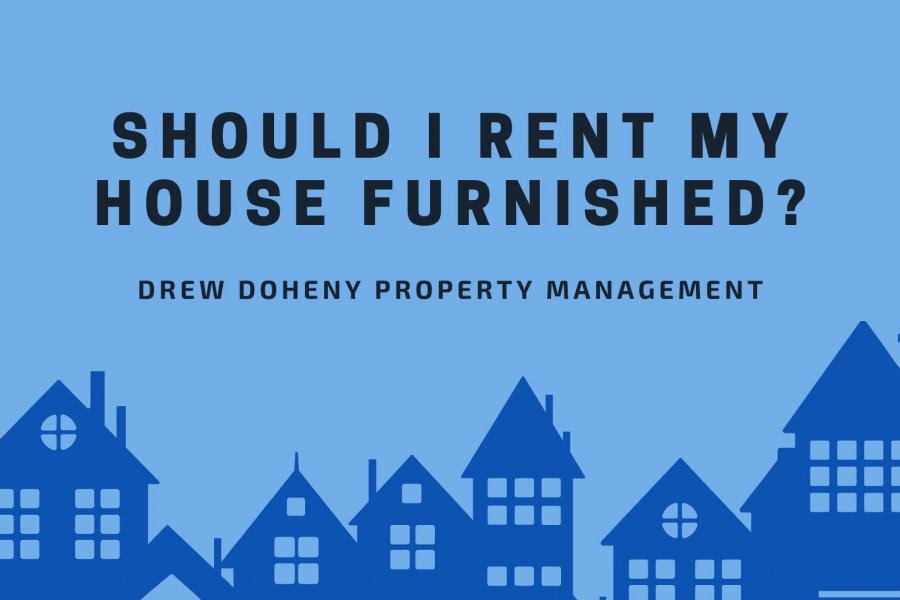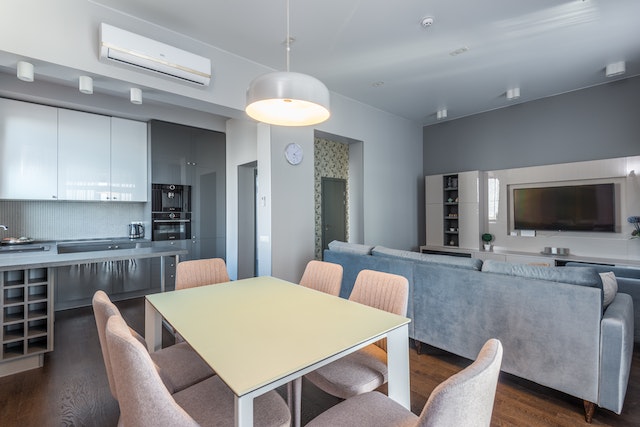
Renting out a property can be a lucrative investment opportunity, providing a steady income stream for property owners. However, when it comes to renting a property, one of the questions that many landlords ask is whether to rent it furnished or unfurnished.
Both options have their merits, and it’s crucial for landlords to decide which is right for their business and how it changes how you advertise the rental.
What Is a Furnished Rental Property?
A furnished rental unit typically includes essential furniture, appliances, and basic amenities needed for comfortable living. This may include items such as beds, sofas, tables, chairs, kitchen appliances, and bathroom essentials.
The extent of furnishings may vary, ranging from a fully equipped home with all the necessities to a partially furnished unit with only the essential items.
You can then set the price of your rental unit depending on the number of furniture and appliances that you provide. Furnished rental properties typically have a higher value compared to unfurnished ones. Furnishing your unit is a great way for landlords to earn higher income from their investment properties.
Who Rents a Furnished Rental Property?
The target market for furnished rental homes can vary depending on the location and property type.

Typically, furnished apartments attract:
- Professionals on short-term assignments
- Individuals in the midst of a relocation
- Students seeking temporary housing during their studies
- Couples who are just starting out
- Small families who cannot afford to buy their own home
- International tenants who prefer a ready-to-move-in option
Benefits of Renting Your Home Furnished
There are several benefits to renting a furnished rental property, including the following:
Attract a Specific Target Market
Furnished rentals appeal to a specific demographic of tenants who are in need of temporary or hassle-free accommodations. By catering to this target market, you can attract tenants who specifically seek out furnished properties—and you’ll be surprised at how many tenants prefer furnished rentals.
Higher Rental Rates
Furnished rental properties often command higher rental rates compared to unfurnished units. The added convenience and value of having furniture, appliances, and amenities already in place allows landlords to charge a premium. This can result in a higher return on investment and increased profitability for property owners.
Competitive Advantage
Offering a furnished rental can give you a competitive edge in the rental market. Depending on the demand in your area, there may be few furnished properties available.This can make your rental stand out and attract tenants who are specifically looking for partially or fully furnished rentals.
Convenience for Tenants
Furnished rentals offer convenience to tenants by eliminating the need to purchase furniture and move it into the property. This is particularly beneficial for individuals who prefer not to invest in furnishings due to the transient nature of their living arrangements.

Tenants can move in immediately without the hassle of buying furniture for the space. On top of this, it increases the profitability of your rental property.
Reduced Property Damage
Renting your property furnished can reduce the possibility of damage to your walls and floors due to moving furniture. If you don’t furnish your rental unit, tenants will bring their own furniture, which involves a lot of potential movement. This can cause scraping on your floor and overall wear and tear on your walls.
Possible Longer Leases
Furnished rentals often attract tenants with short-term housing needs. However, in some cases, tenants may opt for longer lease terms if they find a well-furnished property that meets their requirements. This is especially true if tenants want to try out an area in the long term before making a permanent move.
This can provide stability and consistent rental income for landlords, reducing turnover and vacancy periods.
Shorter Vacancy Periods
Furnished rentals can also have shorter vacancy periods compared to unfurnished properties. By providing a turnkey solution, you can attract tenants more quickly and minimize the time your property remains vacant, ensuring a steady and positive cash flow.
Potential for Tax Deduction
Depending on the jurisdiction, landlords may be eligible for tax benefits related to furnishing their rental units. This can include deductions for the purchase and maintenance of furniture and appliances.

It is advisable to check your local tax laws to understand the specific deductions available in your area.
Things to Consider When Renting a Furnished Rental Home
Before deciding to furnish your rental property, there are several factors that you must consider, such as:
Demand for Furnished Rentals
Research the local rental market to understand the rental rates for both furnished and unfurnished units. Assess the competition and the potential demand from the target market you wish to attract.
Costs Associated with Furnishings
Furnishing the property includes the initial upfront investment in purchasing furniture and appliances, as well as ongoing maintenance and replacement costs. It is essential to strike a balance between quality and cost-effectiveness to stay within your budget and keep expenses in check.
Wear and Tear
Furniture and appliances may experience more significant wear due to constant usage. Consider opting for durable, easy-to-clean materials that can withstand frequent use and require minimal upkeep.
These may be expensive upfront, but will save you money on repairs and replacements in the long run.
Limited Flexibility
Furnished rentals may limit your ability to make changes or upgrades to the property since you would need to coordinate with the existing furnishings. This can be difficult if you want to plan renovations.
Comprehensive Inventory List
A comprehensive inventory list is a document that should outline all the items provided to the tenant including their condition at the beginning of the tenancy. This will protect both the landlord and the tenant, minimizing the potential for disputes over damages or missing items.
Bottom Line
Renting a property furnished can offer numerous benefits that can be valuable to your overall bottom line. However, before deciding to furnish your rental unit, thorough research, careful cost analysis, and consideration of the associated responsibilities are essential.
If you’re unsure, it’s best to work with a reliable property manager, like Drew Doheny Property Management Team, to help you decide whether or not renting out your home furnished is best for your rental business. Call us today for all your property management needs.
